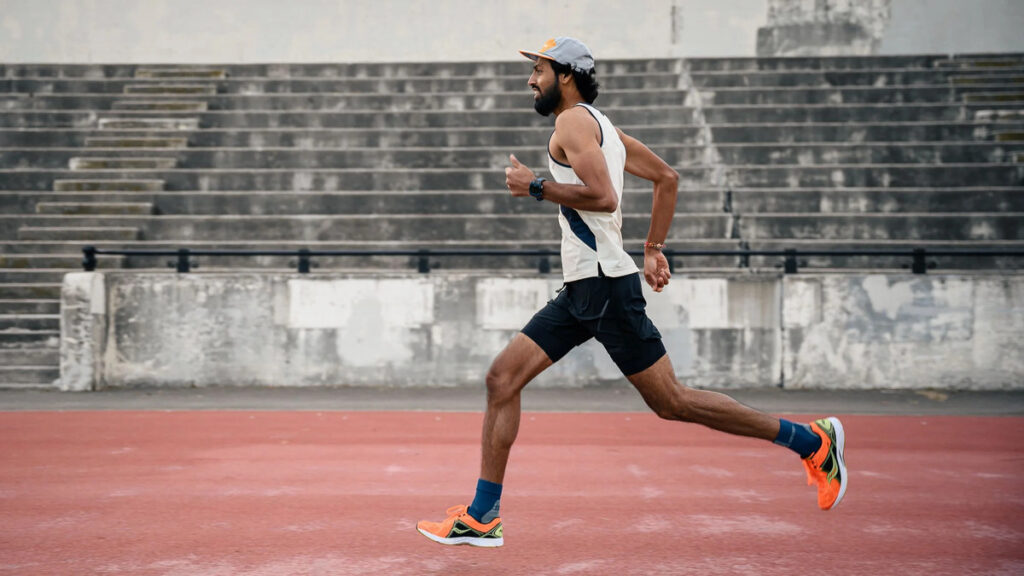Running is not just a physical activity; it’s a science, an art, and a personal journey towards self-improvement. One of the fundamental aspects of running is finding the proper stride. Your stride affects your efficiency and speed and can even prevent injuries. Explore the various types of running form strides and how to determine which one is best suited for you.
Understanding the Basics
Before delving into the different types of strides, it’s essential to understand what a stride is. In running terminology, a stride refers to the length of ground covered by one complete running step. It combines your step length and frequency, crucial in determining your running form.
Short and Swift: The Quick Stride
The quick stride, often associated with sprinters, is characterized by short, rapid steps. This type of stride emphasizes speed over endurance. Sprinters rely on explosive power and quick turnover to cover short distances in record time. If you want to improve your sprinting abilities or participate in short-distance races like the 100m or 200m, the quick stride might be the right choice.
Sprinters’ training focuses on developing explosive strength in their legs and honing their ability to generate immense power quickly. They work on drills to improve their reaction time and practice maintaining form at high speeds.
Going the Distance: The Long Stride
Unlike the quick stride, the long stride focuses on covering more ground with each step. It’s commonly seen in long-distance runners who aim to maintain a steady pace over extended periods. A long stride involves a longer leg extension and a slightly slower cadence. This form is ideal for half-marathons, marathons, and other endurance races.
Long-distance runners prioritize building cardiovascular endurance. Their training includes a mix of long runs, tempo runs, and interval training to enhance their ability to sustain a consistent pace over extended distances.
The Middle Ground: Finding Balance with the Moderate Stride
For many recreational runners, a moderate stride perfectly balances speed and endurance. It combines quick and long strides, allowing you to cover a respectable distance while maintaining a reasonable pace. This versatile stride suits a wide range of running styles and distances.
Runners with a moderate stride often focus on a well-rounded training regimen that includes speed work, tempo runs, and long-distance training. They aim to develop a good balance of speed and endurance to perform well in various races.
Read More:
The Minimalist’s Guide to Stress-Free Travel Packing
Embracing the Advantages of Bike Sport for an Active Lifestyle
Natural vs. Altered Stride
Your natural stride is the way you naturally run without any conscious adjustments. Your body’s unique biomechanics influence it, including factors like leg length, hip flexibility, and muscle strength. Altering your stride, on the other hand, involves making conscious adjustments to improve efficiency or address specific issues.
Sometimes, runners alter their stride to correct inefficiencies or accommodate changes in their body’s condition. This might be due to an injury, a shift in fitness goals, or a desire to improve performance.
Finding Your Ideal Stride
Discovering your ideal stride involves a combination of self-awareness and experimentation. Here are steps to help you find the stride that suits you best:

Assess Your Natural Stride
Start by observing how you naturally run. Are your steps short and quick, or do you naturally cover more ground with each stride? Pay attention to your comfort level and any signs of discomfort or strain.
Consider Your Running Goals
Your running goals are crucial in determining the most suitable stride for you. Are you training for a sprint race, a marathon, or simply running for fitness and enjoyment? Tailor your stride to align with your objectives.
Seek Professional Guidance
If you’re serious about improving your running form, consider consulting a professional, such as a running coach or physical therapist. They can conduct gait analyses and provide personalized recommendations based on your biomechanics.
Gradual Adjustments
If you choose to alter your natural stride, do so gradually. Making sudden and drastic changes can lead to discomfort or even injury. Start with minor adjustments and give your body time to adapt.
Finding the proper running stride is pivotal in enhancing your running performance and preventing injuries. Whether aiming for speed, endurance, or a balanced approach, understanding the nuances of different strides empowers you to make informed choices. Remember, the perfect stride is a highly individualized aspect of running, so take the time to explore and discover what works best for you. Happy running!



